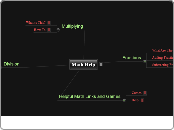Math Help
WORK CITED:http://www.aaamath.com/http://www.answers.com
aFractions
What Are They?
FRACTIONS:An expression that indicates the quotient of two quantities, such as 1/3
Adding Fractions
HOW TO ADD FRACTIONS:To add two fractions with the same denominator, add the numerators and place that sum over the common denominator.EX:3/10 + 2/10 = 5/10 or 1/2How to Add Fractions with different denominators:Find the Least Common Denominator (LCD) of the fractionsRename the fractions to have the LCDAdd the numerators of the fractionsSimplify the FractionEX:3/9 + 1/3 = 6/9 or 2/3
Subtracting Fractions
SUBTRACTING FRACTIONS:To subtract two fractions with the same denominator, subtract the numerators and place that difference over the common denominator.EX:2/5 - 4/5 = 2/5To Subtract Fractions with different denominators:Find the Lowest Common Denominator (LCD) of the fractionsRename the fractions to have the LCDSubtract the numerators of the fractionsThe difference will be the numerator and the LCD will be the denominator of the answer.Simplify the Fraction
Helpful Math Links and Games
Games
http://www.coolmath-games.com/http://www.mathplayground.com/games.htmlhttp://www.aplusmath.com/games/index.html
aHelp
http://www.webmath.com/ Helps Answer questions http://www.math.com/ Help on topicshttp://www.freemathhelp.com/ Math Tuthttp://www.mathleague.com/help/help.htm More help Topics
aMultiplying
What is This?
The operation that, for positive integers, consists of adding a number (the multiplicand) to itself a certain number of times. The operation is extended to other real numbers according to the rules governing the multiplicational properties of positive integers.Read more: http://www.answers.com/topic/multiplication#ixzz1B3EvLGtu
How To
MULYIPLYING:The result of multiplication is the total number (product) that would be obtained by combining several (multiplier) groups of similar size (multiplicand). The same result can be obtained by repeated addition. If we are combining 7 groups with 4 objects in each group, we could arrive at the same answer by addition.EX:2*2*2*2 = 2*4 = 8
Division
What is This?
The operation of determining how many times one quantity is contained in another; the inverse of multiplication.Read more: http://www.answers.com/topic/division#ixzz1B3HBqk7REX:4/2 = 2
LONG
How To
Place the divisor before the division bracket and place the dividend (4138) under it. 17)4138Examine the first digit of the dividend(4). It is smaller than 17 so can't be divided by 17 to produce a whole number. Next take the first two digits of the dividend (41) and determine how many 17's it contains. In this case 41 holds two seventeens (2*17=34) but not three (3*17=51). Place the 2 above the division bracket. 2 17)4138Multiply the 2 by 17 and place the result (34) below the 41 of the dividend. 2 17)4138 34Draw a line under the 34 and subtract it from 41 (41-34=7). Bring down the 3 from the 4138 and place it to the right of the 7. 2 17)4138 34 73Divide 73 by 17 and place that answer above the division bracket and to the right of the two. 24 17)4138 34 73Multiply the 4 of the quotient by the divisor (17) to get 68 and place this below the 73 under the dividend. Subtract 68 from 73 to give an answer of 5. Bring down the 8 from the dividend 4138 and place it next to the 5 24 17)4138 34 73 68 58Divide 58 by 17 and place that answer (3) above the division bracket and to the right of the four. 24317)4138 34 73 68 58Multiply the 3 of the quotient by the divisor (17) to get 51 and place this below the 58 under the dividend. Subtract 51 from 58 to give an answer of 7. 24317)4138 34 73 68 58 51 7There are no more digits in the dividend to bring down so the 7 is a remainder. The final answer could be written in several ways. 243 remainder 7 or sometimes 243r7 or as a mixed number 243 7/17
